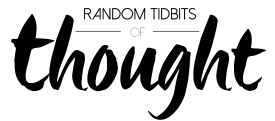This past Saturday, my roommate and I went on a walking tour in the city. We’d been wanting to get a more local’s take on SF neighborhoods, so when the chance came up in the form of a Groupon deal for a tour headed by a long-time SF resident, we decided to do it. We started off in the well-known Castro district of San Francisco, made our way south to the nicer neighborhoods of Eureka Valley, and hiked up four different peaks in the district, including Kite Hill, Tank Hill, Mount Olympus, and Corona Heights, which all afforded some jaw-dropping views of the entire city. This post will provide a nice recap/overview of the tour.
The Castro
From our apartment near downtown, we took the Muni light rail into the Castro. Well-known for being one of the first gay neighborhoods in the United States, this district today boasts a rich history and diverse group of people from all walks of life. We met up with our tour guide Ryan under a giant rainbow flag and he started the tour with the history of the Castro. From the 1930s to the 60s, it was a working-class Irish neighborhood that fell into disrepair after families moved out post-war into newly-developed suburbs. During the 60s, hippies moved into the abandoned neighborhood and began fixing up the houses, and after the Summer of Love, the district rapidly developed into the most prominent gay neighborhood in the city. Harvey Milk, the first openly-gay elected public official in California, started his camera shop (which we visited) and launched his political campaigns in this neighborhood.
Seward Street Slides
From the Castro we headed south, passing by a bunch of shops and restaurants, until finally we hit the more residential part of the neighborhood and our first stop, the Seward Street Slides. The wavy concrete slides were originally designed by a 14-year-old student, and she did a great job because riding down these slides on pieces of cardboard was a thrillingly fast and fun experience! Often featured on “secret spots” lists on popular SF magazines and blogs, these slides were fun to admire and try out.
Kite Hill
We continued our trek uphill and after a small climb reached the first of our four peaks for the day. Known as Kite Hill, this little park was quaint and offered a great view of the city. We could see the downtown high rises pretty clearly and enjoyed the sun and light wind. This would be a great place for a quick walk to an amazing view – after hitting up the other three peaks, this was by far the least tiring to get to.
Tank Hill
We made our way further southwest, cutting through nice neighborhoods and walking up a bunch of hidden steps next to charming small houses. Soon we arrived at our second peak of the day, Tank Hill. Once holding a giant water tank for the city, this hill is now a small park with some rocks jutting out near the edge that offer a precarious (but even more jaw-dropping) view of the city. This time around, we had basically a 180-degree view of San Francisco, from the farthest reaches of Land’s End to the Bay Bridge. Ryan pointed out the major landmarks, which weren’t hard to miss on that clear day, and we snapped some pictures before continuing on.
Mount Olympus
By now it was nearing lunch time, and we’d walked more than half of our four-mile journey. The hills were starting to get harder to climb, but we pressed on, encouraged by the amazing things we’d seen thus far. As we reached our third peak, Mount Olympus, we took a short breather and listened to Ryan describe this place as the one-time geographical center of the city. Adolph Sutro (of Sutro Baths fame), installed a gigantic statue here in the 1880s called the Triumph of Light. The statue mysteriously disappeared in the 1950s, and only the stand remains.
Corona Heights
Our final peak of the day was Corona Heights, which again did not disappoint with its view of the city. The added bonus was that this area also had a children’s museum with free admission called Randall Museum, where we saw a bunch of wildlife (hawks, owls, tortoises) being rehabilitated from injuries. The entire downstairs of the building housed a huge model train set (multiple tracks, intricately-painted models) that was built in the 1960s.
Closing Thoughts
Overall, we had a blast on this tour. Ryan was an amazing tour guide, having lived in various neighborhoods in San Francisco for almost 14 years. His depth of knowledge of the history of the places we visited, as well as his interesting, off-the-beaten-path routes, were impressive and made the tour lots of fun. The tour group we were in was small (four people total), so the tour was very interactive and any questions we had were immediately answered by Ryan.
Eureka Valley and the Castro are oft-heard essential places to check out in the city, and I never had the chance to explore the area until now. I’m glad we were able to go on this tour and see some amazing sights. The added bonus was that we got a nice local’s perspective and plenty of fresh air and exercise.
Check out Ryan’s walking tour, called Roam Local, for four tour options of different neighborhoods in the city – the tour we took is called Four Peaks. It’s independently owned and operated and I can’t recommend it enough.
Ask Me Anything!
Guest Post!
Hikes and views at www.RandomTidbitsofThought.com.










